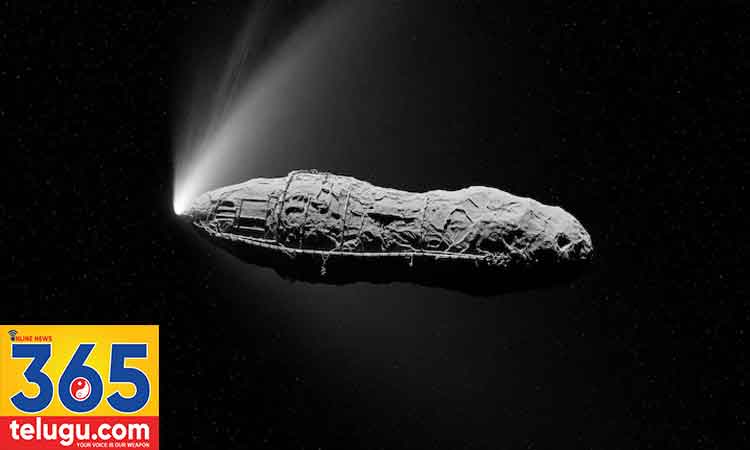365telugu.com online news,November,8th,2025:The interstellar object 3I/ATLAS, currently journeying through our solar system, has once again intrigued scientists. After making its closest approach to the Sun on October 29, this cosmic visitor has baffled astronomers with its vivid green glow—yet its signature comet tail is barely visible.
At Arizona’s Lowell Observatory, researcher Qicheng Zhang and his team observed the phenomenon using the Discovery Telescope on November 5. They detected the green color through a filter sensitive to diatomic carbon (C₂)—a compound known to emit green light when broken down by the Sun’s ultraviolet radiation.
Zhang explained that solar UV rays act much like they do on human skin—breaking down larger hydrocarbon molecules on the comet’s surface. “When the comet gets close to the Sun, ultraviolet light breaks these molecules apart,” he said.
As for the missing tail, scientists believe it’s not truly absent but hidden from view. The faint tail appears almost directly behind the comet, bending slightly, making it difficult to see from Earth’s perspective. What seems like a “tail-less” comet is likely just an optical illusion caused by the viewing angle.
Adding to the mystery, China’s Tianwen-1 orbiter managed to capture images of 3I/ATLAS during its Mars flyby in early October. The comet appeared 10,000 to 100,000 times dimmer than typical Martian targets, making the successful capture a remarkable technological feat.

Meanwhile, not everyone agrees that 3I/ATLAS is an ordinary comet. Harvard astrophysicist Avi Loeb points to its non-gravitational acceleration and unusually blue hue, suggesting it could even be of artificial origin. He has urged NASA to release additional high-resolution images taken by its HiRISE camera for further study.
For now, 3I/ATLAS remains a cosmic enigma—a glowing green traveler whose elusive tail and puzzling behavior continue to challenge our understanding of interstellar visitors.

